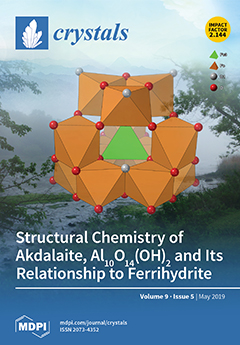Open AccessPerspective
New Directions in Metal Phosphonate and Phosphinate Chemistry
by
Stephen J.I. Shearan, Norbert Stock, Franziska Emmerling, Jan Demel, Paul A. Wright, Konstantinos D. Demadis, Maria Vassaki, Ferdinando Costantino, Riccardo Vivani, Sébastien Sallard, Inés Ruiz Salcedo, Aurelio Cabeza and Marco Taddei
Cited by 89 | Viewed by 13948
Abstract
In September 2018, the First European Workshop on Metal Phosphonates Chemistry brought together some prominent researchers in the field of metal phosphonates and phosphinates with the aim of discussing past and current research efforts and identifying future directions. The scope of this perspective
[...] Read more.
In September 2018, the First European Workshop on Metal Phosphonates Chemistry brought together some prominent researchers in the field of metal phosphonates and phosphinates with the aim of discussing past and current research efforts and identifying future directions. The scope of this perspective article is to provide a critical overview of the topics discussed during the workshop, which are divided into two main areas: synthesis and characterisation, and applications. In terms of synthetic methods, there has been a push towards cleaner and more efficient approaches. This has led to the introduction of high-throughput synthesis and mechanochemical synthesis. The recent success of metal–organic frameworks has also promoted renewed interest in the synthesis of porous metal phosphonates and phosphinates. Regarding characterisation, the main advances are the development of electron diffraction as a tool for crystal structure determination and the deployment of in situ characterisation techniques, which have allowed for a better understanding of reaction pathways. In terms of applications, metal phosphonates have been found to be suitable materials for several purposes: they have been employed as heterogeneous catalysts for the synthesis of fine chemicals, as solid sorbents for gas separation, notably CO
2 capture, as materials for electrochemical devices, such as fuel cells and rechargeable batteries, and as matrices for drug delivery.
Full article
►▼
Show Figures





